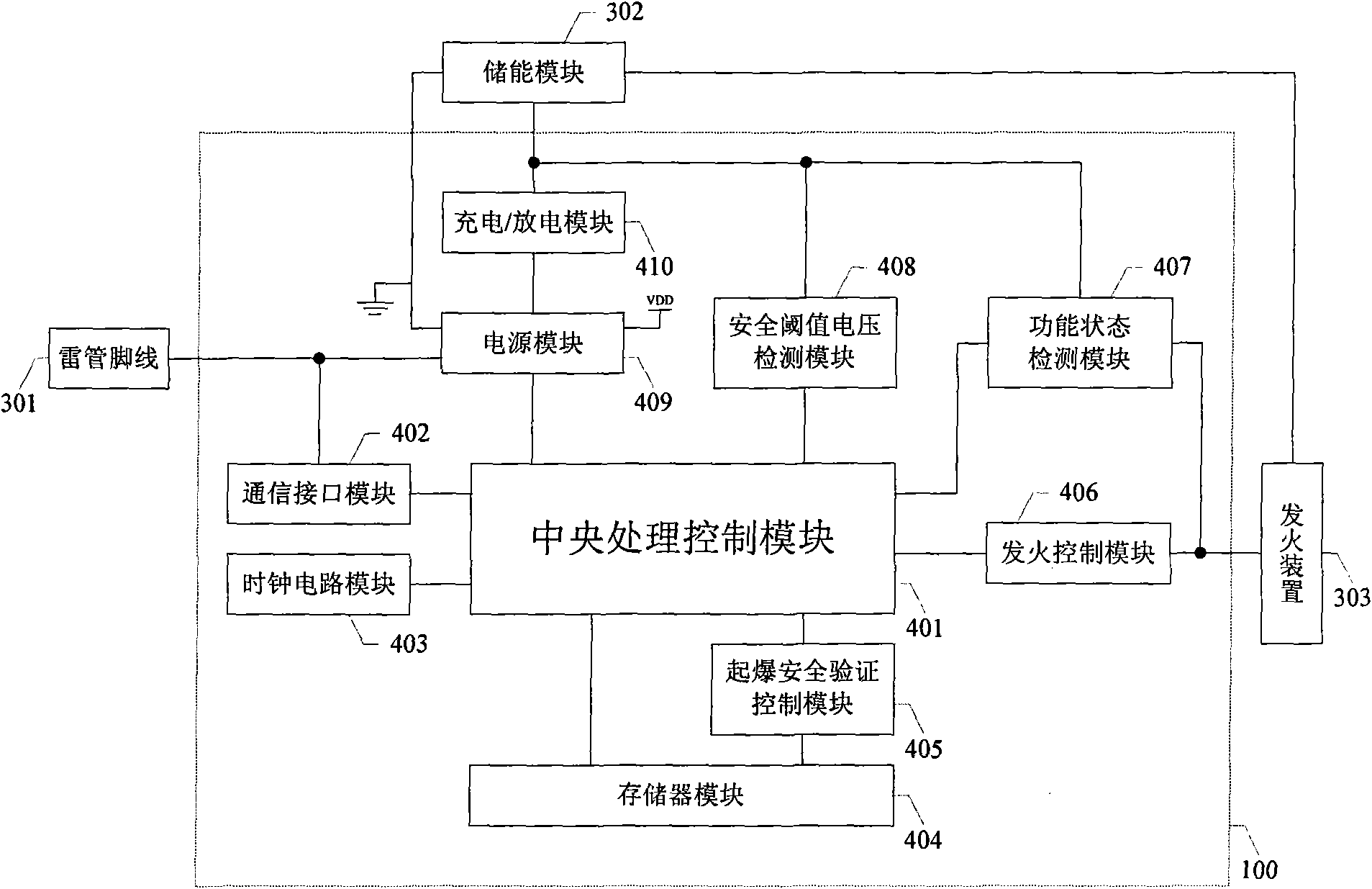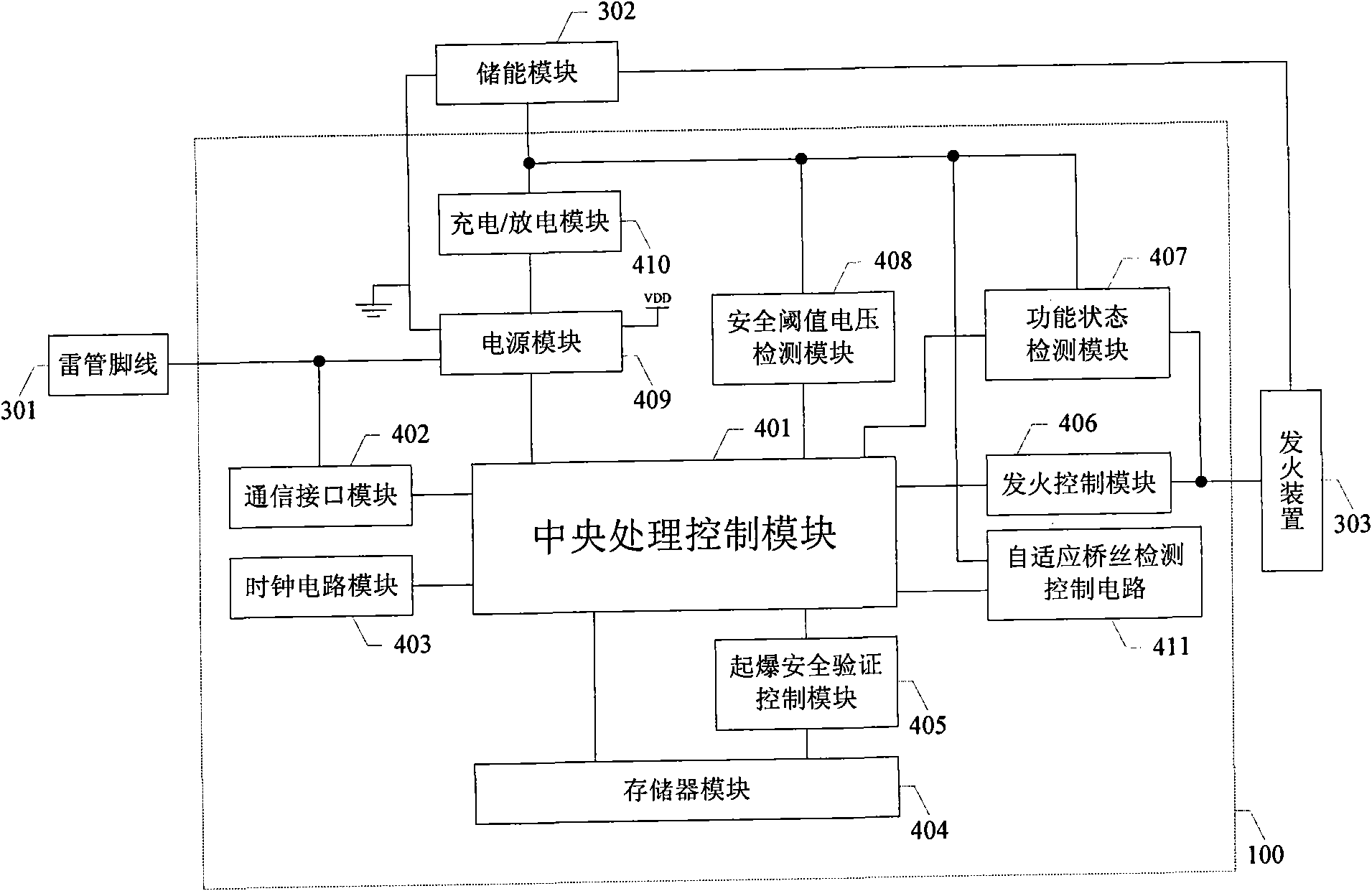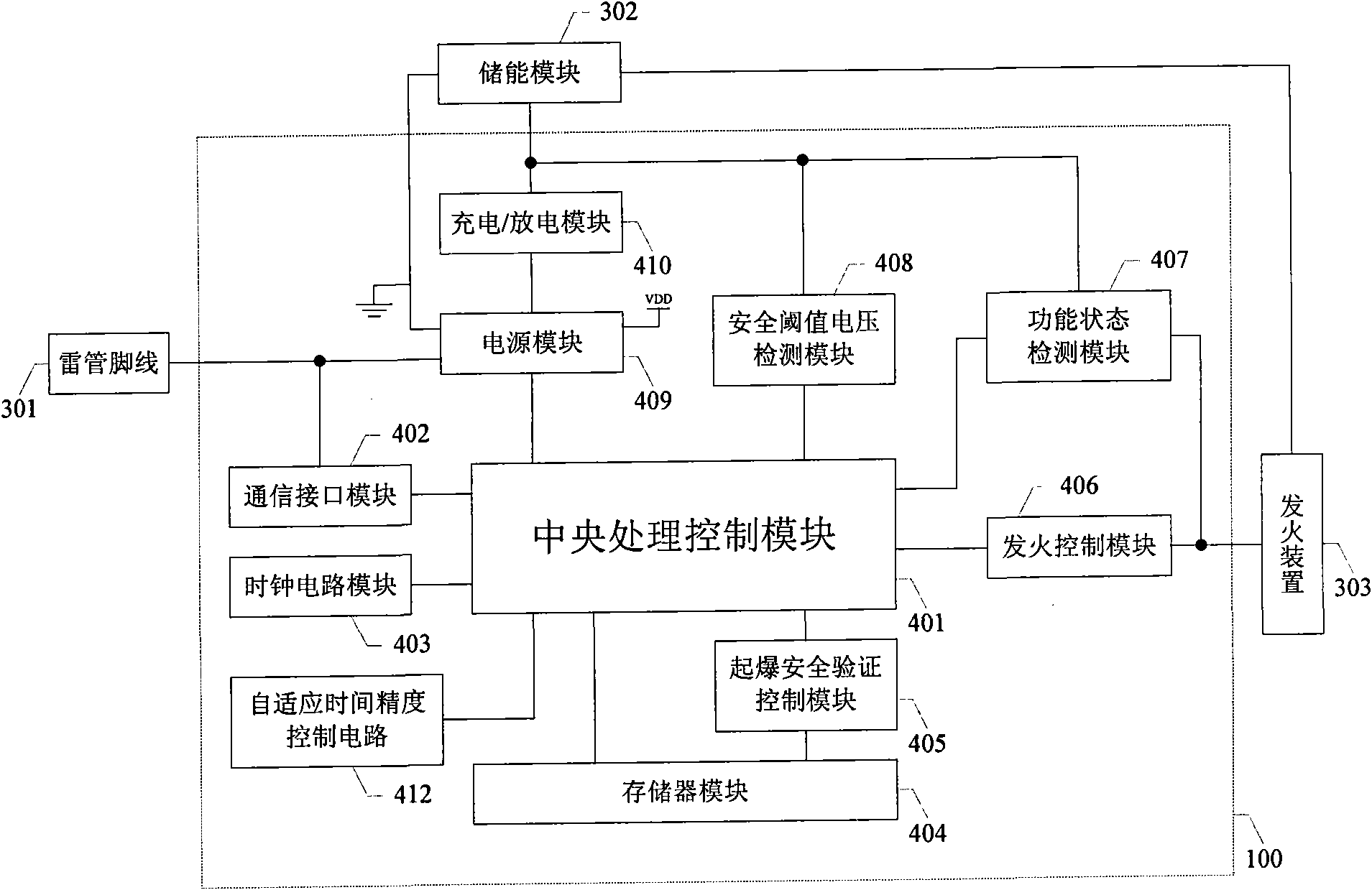Control chip of digital electronic detonator
A digital electronic detonator and control chip technology, applied in electrical program control, program control in sequence/logic controllers, weapon accessories, etc. problems, to prevent illegal detonation, improve operation and use safety, and improve safety and reliability.
- Summary
- Abstract
- Description
- Claims
- Application Information
AI Technical Summary
Problems solved by technology
Method used
Image
Examples
Embodiment Construction
[0046] Such as figure 1 As shown, the present invention provides a digital electronic detonator control chip 100, including a central processing control module 401, a communication interface module 402, a clock circuit module 403, a memory module 404, a detonation safety verification control module 405, an ignition control module 406, and a functional state A detection module 407 , a safety threshold voltage detection module 408 , a power supply module 409 , and a charging / discharging module 410 .
[0047] First of all, the digital electronic detonator control chip is provided with a DC voltage by the detonator leg 301, such as a DC 12 volt voltage, or using a carrier wave as a power supply input, so that the detonator leg 301 is directly connected to the power module 409, and passes through the inside of the power module. On the one hand, it is connected to the charging / discharging module 410 to charge the energy storage module 302. The energy storage module 302 contains two ...
PUM
 Login to View More
Login to View More Abstract
Description
Claims
Application Information
 Login to View More
Login to View More - R&D
- Intellectual Property
- Life Sciences
- Materials
- Tech Scout
- Unparalleled Data Quality
- Higher Quality Content
- 60% Fewer Hallucinations
Browse by: Latest US Patents, China's latest patents, Technical Efficacy Thesaurus, Application Domain, Technology Topic, Popular Technical Reports.
© 2025 PatSnap. All rights reserved.Legal|Privacy policy|Modern Slavery Act Transparency Statement|Sitemap|About US| Contact US: help@patsnap.com



